A US Department of Peacebuilding?
Two peacebuilders share parallel stories of connection and hope
Soon after the pandemic began in 2020, the authors separately found their way to a new community for each of them: the US Department of Peacebuilding Campaign and national grassroots advocacy community. As the pandemic raged, the authors engaged with a growing group of people across the country who were practicing the ways of the Beloved Community. For them, the experience was transformational.
DJ’s Story
As I sit in my too worn position in front of my laptop, the Florida air is pregnant with rain. Cooling down and grateful for central air conditioning, the invention that made the Sunshine state hospitable, I reflect on my life now. How is it that I feel so much better off, yes, even blessed, in 2022 than I did pre-pandemic?
For me the answer lies in the serendipitous finding of a community affiliated with the Peace Alliance called the Department of Peacebuilding. The Peace Alliance is the organization started by Marianne Williamson and others over twenty years ago. Currently there is legislation, HR 1111, the Department of Peacebuilding Act, that is a rich and multi-layered proposal for a new Cabinet-level Department at the Federal level. The United States has not had a new Cabinet-level Department since the passage of the Homeland Security Act in November 2002, which materialized, unhesitatingly, after the September 11th colossal catastrophe of the previous year.
The Department of Peacebuilding, previously the Department of Peace, has had legislation presented to Congress every 2 years since 2001. The DoP was originally crafted by then US Representative Dennis Kucinich (D-OH-10) in 2001/2002 as H.R. 2459: Efforts to establish a Department of Peace captured the attention of Marianne Williamson, Dot Maver, Anne Creter and others. Kucinich’s Department of Peace, introduced in the House 07/11/2001 (exactly 60 days before 9/11), establishes (in part):
“a Department of Peace, which shall be headed by a Secretary of Peace appointed by the President, with the advice and consent of the Senate.
Sets forth the mission of the Department, including to:
- hold peace as an organizing principle;
- endeavor to promote justice and democratic principles to expand human rights; and
- develop policies that promote national and international conflict prevention, nonviolent intervention, mediation, peaceful resolution of conflict, and structured mediation of conflict.
- create a Federal Interagency Committee on Peace.
- establish a Peace Day [which] urges all citizens to observe and celebrate the blessings of peace and endeavor to create peace on such day.
One can only wonder if by some magical twist of fate Kucinich’s Department of Peace had been approved before 9/11 that the disharmony, racial profiling, islamophobia, and other types of xenophobia and hate crimes, not to mention 20 years of war and terror, that ensued instead might have all been circumvented.
As happenstance would have it, I was watching ABC morning television, an unusual occurrence for me, on the morning of 9/11. WABC New York was broadcasting live after the first plane hit and I stood in my living room and saw the second plane hit the South tower. My heart sank. Was that clearly terrorism? I immediately panicked. War would be inevitable. I wrote an essay about my thoughts, which were quite unpopular at the time, and they were published in a small newspaper in London.
Peace would not be possible. For my position as an assistant professor at the University of South Florida, that very same day I was teaching a small class of preservice teachers at the satellite classroom in Sarasota’s New College campus. Almost all of my students were wives of military men. We sat in a circle, and I listened to my students’ fears. I said nothing of my own contrary ideas.
I believe in peace, deeply. War, hate and racism have never made sense to me. Yet, I have been unable up until now to find a community of like-minded folks. I earned a doctorate from UCLA in Comparative Education with a MA in African Studies and journeyed to Florida in 1997 to experiment with new ways of teaching and learning. It took a global pandemic to shut down my life and give me a chance to reboot and be blessed to connect with folks through Zoom like Dan Kahn, Nancy Merritt, Kelly O’Brien, Julia Gandy, Janna Weiss, Bud Johnston, Charlie Dennis, and Laura Brown all through the Peace Alliance.
As if peeking from behind a curtain I attended my first Peace Alliance Hope Circle Zoom meeting in the Spring of 2020. I bonded with a wonderful woman from the Middle East. We shared our hopes for a peaceful future. I listened to the participants’ words of kindness, of connection, and found inspiration. Within a few months I had branched out into Dan Kahn’s Truth and Reconciliation Group. Within another few months Kelly O’Brien and I began Truth Storytelling as a subgroup of Dan’s larger group. Nancy Merritt, the heartbeat of the peacebuilding community, inspired me to help strategize for the Department of Peacebuilding Campaign. That is where I met the amazing Laura Brown.
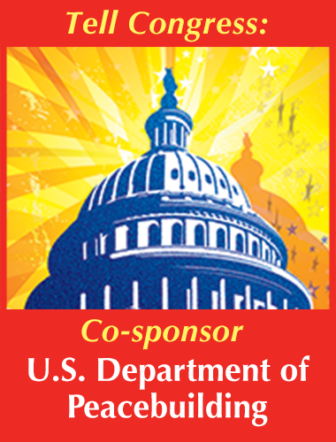
Laura Brown and I can talk on the phone about everything under the sun and still complete the agenda for the communications committee for the Department of Peacebuilding Campaign. We are like sisters raised by different parents. She is family. The Department of Peacebuilding Campaign folks bring to the table their devotion and commitment to peace, every day, in every way. Today I feel like the lover of peace inside of me is vibrantly embraced. Today I feel connected and part of a blessed and beloved community for the first time in my 65 years of living on this planet. Today I have hope.
We are a blessed community.
Laura’s Story
Gathering with Intention to Build Peace
I found my way to the Department of Peacebuilding Campaign in spring 2020, meeting online via Zoom. After spending the previous year or so connecting to various online activities hosted by the Peace Alliance, I felt drawn to learn more about how I could contribute my gifts and talents to help promote the legislation in Congress to create a historic, cabinet-level institution for peacebuilding. The campaign calls are orchestrated by the Department of Peacebuilding Committee, which is the grassroots advocacy arm of the Peace Alliance.
The online campaign calls were facilitated by a member of the committee, and each month a group of some dozen of us from across the country would gather to talk about our lives, our communities, and what we might do to advance the legislation in Congress.
At first, I listened to others share stories of their lives, and shared stories about my life residing with my maternal family in a national forest in Northwestern Pennsylvania, and I asked a lot of questions. Slowly, my life-long passion for peace and peacebuilding began to emerge in new and fulfilling ways. I relaxed more into a space where I felt that I truly belonged. And the pandemic seemed to recede more into the background of my awareness.
One of the stories I shared was how, at the tender age of 17 in the early 1980s, I had a profound experience while touring Europe with a US national band and choir. During a performance in Germany, where US and Russian armed forces were on the front lines of a potential global war, I realized the importance of peace on Earth and how peace needed to be lived first within each individual.
When I shared this story, I was facilitating my first live advocacy Zoom call in the fall of 2020 with a legislative aide and a handful of us from the campaign community. As the 30-minute call suddenly neared its end, I found myself asking the aide if the US Representative would consider cosponsoring the bill. One of the goals of the advocacy work is to gain cosponsors for the bill so that it can advance to the next stage in the House. The aide responded favorably. And, to my astonishment, she soon emailed me to say that the Congresswoman would cosponsor the bill. My first attempt at advocacy was a success!
Several months later, in December, I was surprised and honored when a member of the Department of Peacebuilding Committee asked me if I would consider joining the group. I immediately said “YES!”
Forming Community through Shared Values
After I joined the committee, I embarked on a new journey. The committee decided to create a handbook that set in writing the operations of the group. During this process, I discovered that the purpose of the committee is to co-create the Beloved Community while advocating for cultural transformation leading to and through a cabinet-level Department of Peacebuilding.
The committee then formalized a set of values. We chose these values: Peacebuilding, nonviolence, justice, love, compassion, joy, creativity, integrity, trust, diversity, and critical thinking. From these values, the committee strives to foster peacebuilding within the individual, across organizations, among the Beloved Community, with all living beings, and with the Earth.
Breaking Free from Patriarchy
As my work on the committee evolved, I found myself learning more about patriarchy. One of the committee members suggested I order the book The Gender Knot, written by nationally recognized sociologist Allan G. Johnson. In the book, Johnson writes about the “pain and confusion” that everyone experiences when they live with inequality. He asserts that the patriarchal culture in which we currently live is the root of the violence that entraps us.
Violence in all its forms prevents us from discovering our true self, living freely, and allowing our potential to grow and expand naturally. Patriarchy, the author states, is a way of organizing social life. Patriarchy is male-dominated, male-identified, and male-centered. Patriarchy is organized around dominance and control, as well as suppression of women and feminine ways of life, Johnson writes.
This systemic violence in our culture blocks us from being able to create the Blessed Community. Yet, history shows other forms of organizing social life in which people lived in more cooperative and peaceful communities. In societies in which the work of men and the work of women are valued equally, certain forms of violence are practically nonexistent. In those societies, Johnson states, life is seen as an interconnected whole.
Moving beyond patriarchy and systems of dominance and control allow all of us to experience more safety, security, belonging, and wholeness. We come to the realization that, at heart, we are all relational beings. From this lived experience of Blessed Community, our potential can unfold more freely.
Holding Space for the Lover in Each of Us to Come Alive
To me, being “blessed” is a state of feeling fulfilled, joyful, and that our lives are deeply meaningful. We feel that we are the beloved, being loved by a mysterious force working to help us produce our best good. We become the lover, partaking in a more magical realm of existence. We are able to help others in a more meaningful way that is often healing and uplifting.
Blessed Community—or Beloved Community—can be a place where the members hold each other in unconditional love so that the lover in each of us can feel safe and secure. Being soft and vulnerable allows the lover in each of us to come forward. As we get in touch with that lover inside, we can come alive and express ourselves more fully.
Lovers take delight in each other. Lovers appreciate and honor each other. Lovers experience equal giving and receiving, which creates connection and intimacy. Lovers experience playful relationships in which they can see the beauty in each other and in life. Lovers hold a sense of wonder toward each other. Lovers find fulfillment in relationship.
A Transformational Moment
One day, while happily immersed in my committee work, I found some interesting information online and thought to send it to another new friend in our greater community. The information related directly to a question the friend had asked in our previous meeting. I sent an email with the information to the friend, saying that I thought of him when I read the information.
Several hours later, I opened the return email. The reply began:
“How blessed am I that you thought of me!”
That was a transformational moment for me. How often do we receive emails from people saying they feel blessed just because you thought of them?
Deepening Our Service to Others
By the end of 2021, both DJ and I became aware of each other when our separate work connected through the Department of Peacebuilding Committee and an opportunity arose to engage in shared work.
Since then, we’ve each experienced the joy of connecting with a newfound partner in life and a deepening sense of belonging as our shared work continues through art projects, communication initiatives, truth and reconciliation, and more people joining our community.
Little did we realize that as the pandemic spread fear and panic, our lives were starting to flourish through love and compassion. We were becoming a blessed and beloved community. Expanding the culture of peace.


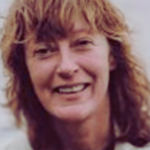
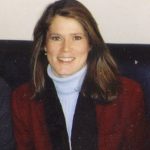
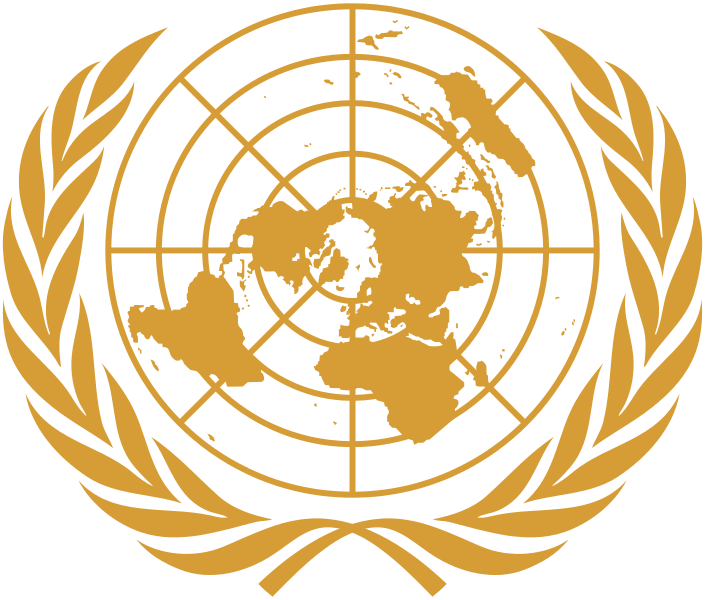
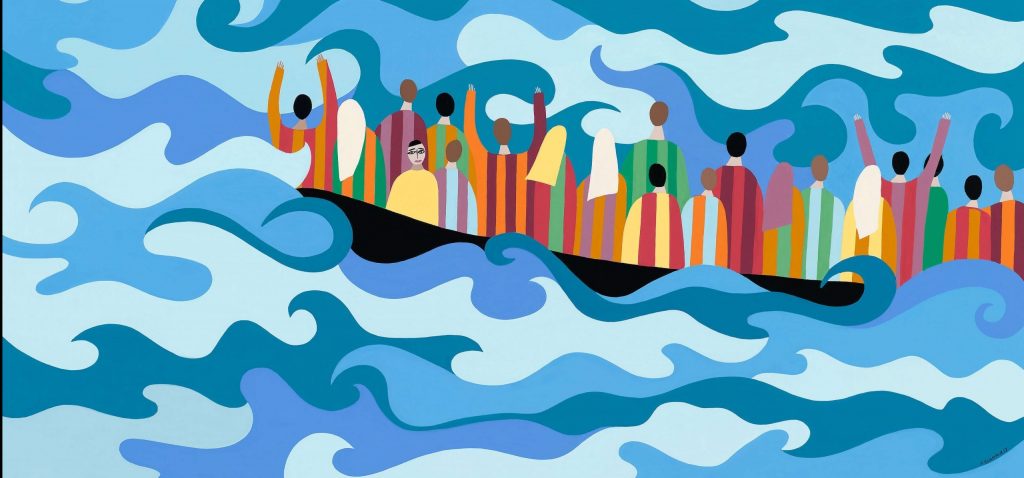
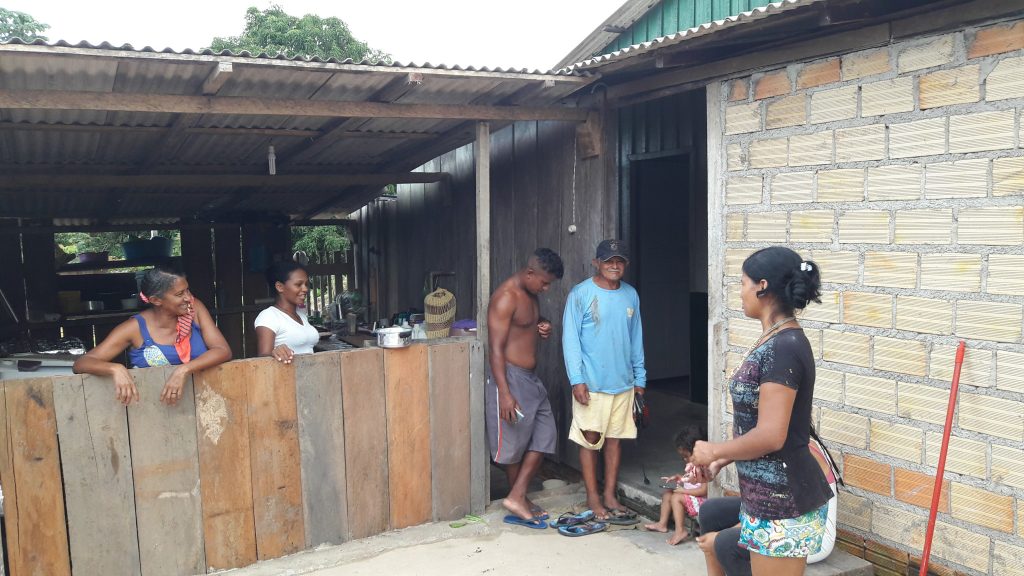
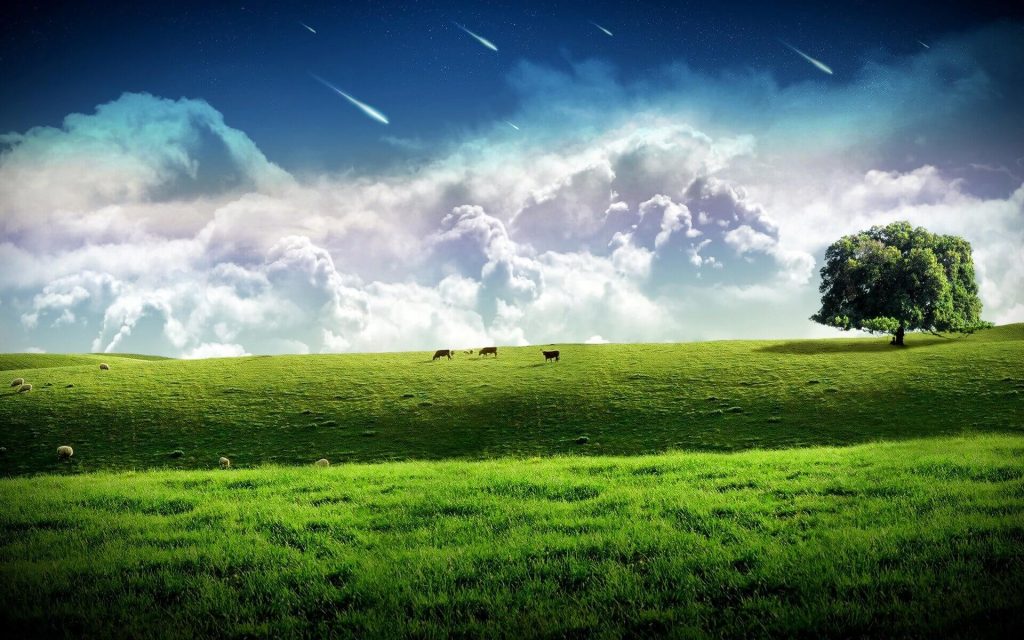
Thank you, DJ and Laura, for sharing your experience here. You both inspire me and I am truly blessed to be in the beloved community of the Peace Alliance Department of Peacebuilding Campaign with you. Looking forward to our Campaign call on International Day of Peace, 9/21. All are welcome. See the PeaceAlliance.org calendar.
Thank you, Karen.